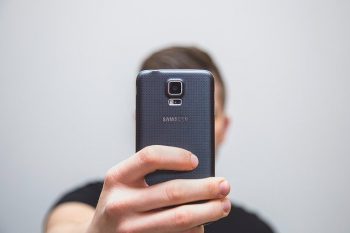A Positive Role for Selfies in Cosmetic Surgery?
 Not so long ago, selfies were decried as a less-than-admirable driver of plastic surgery numbers. Early this year, the Mirror, a U.K. tabloid, published the story of a “selfie mad mum” with this subhead, “Lucy O’Grady has blown thousands of pounds on boob and nose operations, fillers and Botox – and she’s not alone.” And, commenting on the rise in younger patients seeking cosmetic surgery, the New York Post reported in February, “the pressure to look good comes from seeing your own face popping up on social media.”
Not so long ago, selfies were decried as a less-than-admirable driver of plastic surgery numbers. Early this year, the Mirror, a U.K. tabloid, published the story of a “selfie mad mum” with this subhead, “Lucy O’Grady has blown thousands of pounds on boob and nose operations, fillers and Botox – and she’s not alone.” And, commenting on the rise in younger patients seeking cosmetic surgery, the New York Post reported in February, “the pressure to look good comes from seeing your own face popping up on social media.”
But is there a positive role selfies can play in cosmetic surgery? According to a new study in the Aesthetic Surgery Journal, the official publication of the American Society for Aesthetic Plastic Surgery, there is—and it’s after a procedure.
The research, conducted by several physicians at the Cleveland Clinic, was designed to determine whether smartphones could be part of helping surgeons follow up with patients efficiently. The hypothesis was that by facilitating communication, the devices could help ease patient concerns, improve the overall post-operative process and perhaps even aid in detecting complications earlier than usual.
The doctors developed a post-op routine involving smartphones to test on 57 patients over the period of several months. The protocol included a text from the surgeon to the patient, instructing them to forward an image of the surgical area within 48 to 72 hours after the procedure. The physician then followed up with a text or a phone call that same day to share their views on the patient’s progress. Finally, each patient completed a questionnaire to measure his or her satisfaction with the experience.
The article in the Aesthetic Surgery Journal reported that 96% of the 52 patients who responded to the questionnaire said the smartphone protocol improved their post-op experience. What’s more, images sent in by the patients enabled surgeons to spot complications early in three cases—issues that could then be treated before the pre-scheduled follow-up appointment.
We’ve been practicing cosmetic surgery in New York for decades, and like many other leading edge practices, we communicate with our patients using smartphones when it makes sense. Prior to surgery, we can conduct consultations via cell phone and share images. After surgery, if a patient has concerns, a photo sent via text can be helpful along with a phone discussion.
Of course, electronic communications can never be perfect substitutes for in-person appointment and exams. As the use of smart devices continues to spread and the medical profession finds new ways to use them to serve patients, we urge our colleagues not to rely on them too much. Smart phones should allow cosmetic surgeons to be in more frequent contact with patients—not to replace one type of interaction with another.
Since social media contributes to the demand for cosmetic surgery in New York and around the world, plastic surgeons must accept increased responsibility along with opportunity. It has always been necessary for those in our profession to recognize when it doesn’t make sense to operate patients who may suffer from body dysmorphic disorder, or who may have unrealistic expectations for physical results or who are simply too young to request a surgical or even non-invasive procedure. Social media is no doubt causing an increase in those cases.
What do you think? Is social media overall a good thing when it comes to plastic surgery—providing opportunity for doctors and patients to connect? Or, does the potential for increased dissatisfaction with one’s body and unhealthy desire for change outweigh the benefits?